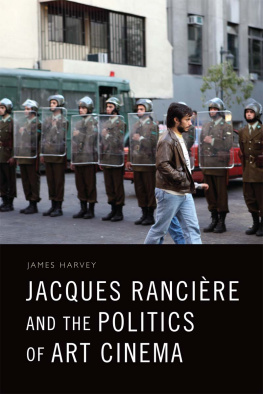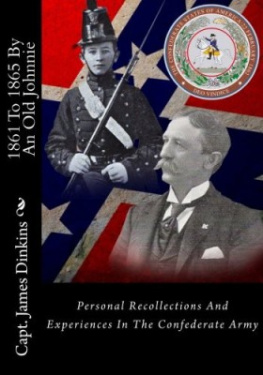PREFACE
In preparing this book it has not been the purpose of the author to write a complete historical sketch of the Michigan cavalry brigade. Such a history would require a volume as large for the record of each regiment; and, even then, it would fall short of doing justice to the patriotic services of that superb organization. The narrative contained in the following pages is a story of the personal recollections of one of the troopers who rode with Custer, and played a partsmall it is true, but still a partin the tragedy of the civil war. As such it is modestly put forth, with the hope that it may prove to be "an interesting story" to those who read it. The author also trusts that it may contribute something, albeit but a little, toward giving Custer's Michigan cavalrymen the place in the history of their country which they so richly earned on many fields.
Doubtless many things have been omitted that ought to have been included and some things written in that it might have been better to leave out. These are matters of personal judgment and taste, and no man's judgment is infallible. The chapters have been written in intervals of leisure during a period of more than twenty years. The one on Cedar Creek appeared first in 1886; the Gettysburg campaign in 1889; Brandy Station, Kilpatrick's Richmond expedition, the Yellow Tavern campaign, Buckland Mills, Hanovertown and Haw's Shop, The Trevilian Raid and some other portions have been prepared during the current year1908. While memory has been the principal guide, the strict historical truth has been sought and, when there appeared to be a reasonable doubt, the official records have been consulted, and the writings of others freely drawn upon to verify these "recollections."
The Memoirs of P.H. Sheridan and H.B. McClellan's Campaigns of Stuart's Cavalry have been of especial value in this respect; the latter helping to give both sides of the picture, particularly in the accounts of the battles of Buckland Mills and Yellow Tavern. Wade Hampton's official reports were put to similar use in describing the battle of Trevilian Station.
So far as mention is made of individual officers and men there is no pretense that the list is complete. Those whose names appear in the text were selected as types. Hundreds of others were equally deserving. The same remark applies to the portraits. These are representative faces. The list could be extended indefinitely.
It was intended to include in an appendix a full roster of all the men who served in the Sixth Michigan cavalry and in the other regiments as well; but this would have made the book too bulky. By applying to the adjutant general of Michigan the books published by the state giving the record of every man who served in either of the regiments in the brigade can be obtained.
The Roll of Honora list of all those who were killed in action, or who died of wounds received in actionis as complete as it was possible to make it from the official records. In a very few cases, men who were reported "missing in action," and of whom no further record could be found, were assumed to have belonged in the list, but these are not numerous enough to materially affect the totals.
For the rest, the author cannot claim that he has done justice to either of these organizations, but he has made an honest effort to be fair and impartial, to tell the truth as he saw it, without prejudice. How well he has succeeded is not for him to say. "It is an interesting story," said an officer who served with distinction in the Fifth Michigan cavalry. If that shall be the verdict of all the comrades who read it, the writer will be satisfied.
CHAPTER I
A NATIONAL AWAKENING
The war cloud that burst upon the country in 1861 was no surprise to sagacious observers. For many years it had been visible, at times a mere speck in the sky, again growing larger and more angry in appearance. It would disappear, sanguine patriots hoped forever, only to come again, full of dire portent and evil menacings. All men who were not blind saw it, but most of them trusted, many believed, that it would pass over and do no harm. Some of those high in authority blindly pinned their faith to luck and shut their eyes to the peril. Danger signals were set, but the mariners who were trying to steer the Ship of State, let her drift, making slight, if any, efforts to put her up against the wind and keep her off the rocks.
It is likely, however, that the Civil War was one of those things that had to be; that it was a means used by destiny to shape our ends; that it was needed to bring out those fine traits of National character which, up to that time, were not known to exist. Southern blood was hot and Northern blood was cold. Though citizens of one country, the people of the North and the people of the South were separated by a wide gulf in their interests and in their feelings. Doubt had been freely thrown upon the courage of the men who lived north of Mason and Dixon's line. The haughty slave owners and slave dealers affected to believe, many of them did believe, that one southern man could whip five "yankees." It took four years of war to teach them a different lesson.
It was the old story of highland and lowland feud, of the white rose and the red rose, of roundhead and cavalier, of foemen worthy of each other's steel fighting to weld "discordant and belligerent elements" into a homogeneous whole.
But war is not always an unmixed evil. Sometimes it is a positive good, and the Nation emerged from its great struggle more united than ever. The sections had learned to respect each other's prowess and to know each other's virtues. The cement that bound the union of states was no longer like wax to be melted by the fervent heat of political strifes. It had been tested and tempered in the fiery furnace of civil war. The history of that war often has been written. Much has been written that is not history. But whether fact or fiction, the story is read with undiminished interest as the years rush by.
One story there is that has not been told, at least not all of it; nor will it be until the last of those who took part in that great drama shall have gone over to the silent majority. It is the story of the individual experiences of the men who stood in the ranks, or of the officers who held no high rank; who knew little of plans and strategy, but bore their part of the burden and obeyed orders. There was no army, no corps, no division, brigade, or regiment, scarcely a battery, troop, or company, which went through that struggle, or a soldier who served in the field "for three years or during the war," whose experiences did not differ from any other, whose history would not contain many features peculiar to itself or himself. Two regiments in the same command, two soldiers in the same regiment, might get entirely different impressions of the battle in which both participated. Two equally truthful accounts might vary greatly in their details. What one saw, another might not see, and each could judge correctly only of what he, himself, witnessed. This fact accounts, in part, for the many contradictions, which are not contradictions, in the "annals of the war." The witnesses did not occupy the same standpoint. They were looking at different parts of the same panorama. Oftentimes they are like the two knights who slew each other in a quarrel about the color of a shield. One said it was red, the other declared it was green. Both were right, for it was red on one side and green on the other.










